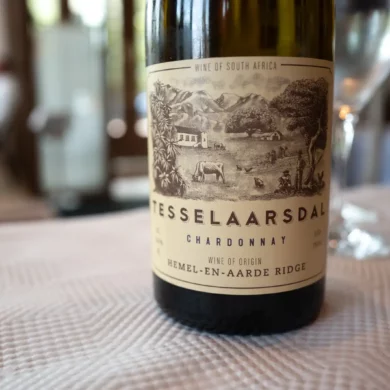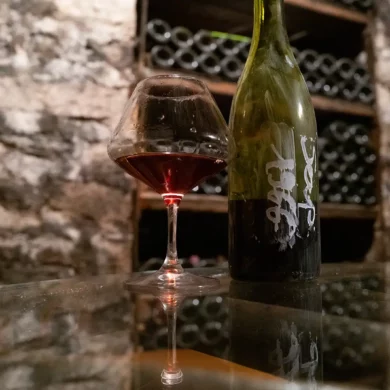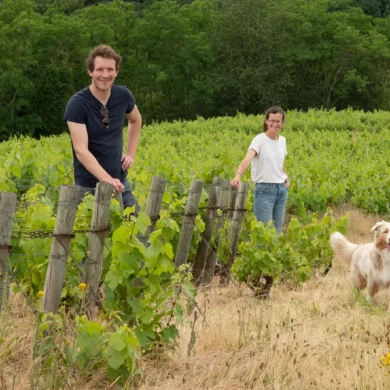“Do you know where wine is born, really?” Alessandro Mori asked me with a quizzical squint in his eye. We were standing next to his winery, Il Marroneto, a stone house dating back to 1246 where nuns used to dry chestnuts. Atop the hill overlooking his property stood a singular chapel, the Chiesa della Madonna delle Grazie, from which comes the name of Mori’s famed vineyard. It seemed stoic but forgotten. And in the distance, the famous cypress-lined fields of the Crete Senesi were flush with new greenery. Tiny white ground-cover flowers bloomed in the vine rows around us.
For four straight days it had rained — the first precipitation in more than three months — and it was about to rain again. You could feel it in the air. But before the clouds could open up and quench the quick-drying, sandy soil of the Madonna delle Grazie vineyard, I could sense another shift in the climate. Alessandro was about to rain some truth down upon me.
Where is wine born, really? I thought I knew where this was going. “In the vineyard,” I said confidently. Because that’s what every winemaker says. Besides, just look around you.
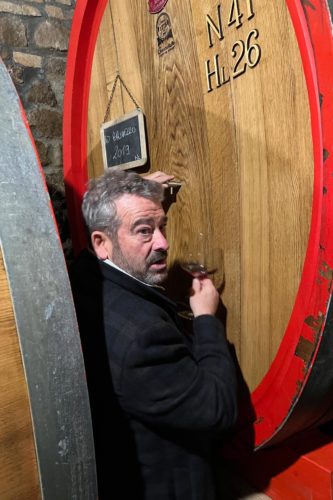
“No. In the cellar,” Mori promptly responded.
I had a feeling I was about to be shown the gate.
“In the vineyard is born the grape. Here, things are different, and that’s what I want to transmit to you today.” Then, his mood softened a bit, and a twinkle showed in his eye. “Relax,” he said.
With that, he told me and my travel companion — a wine-loving friend from my college days named Adam — to wait while he entered the building. Through a separate door he emerged, and along with his son and protégé, Iacopo, he ushered us in. Class was now in session.
The Convictions of a Traditionalist
For 46 vintages, Alessandro Mori has watched Montalcino rise, fall and rise again. His methods may have been honed over time, but his conviction about what Brunello di Montalcino can be and, more importantly, ought to be, has never faltered. Inky, oaky, brawny: these are words that would never pass his lips regarding his Brunello.
“Here there is only grape and wood, nothing else,” he told us. “No control of temperature, no chemicals, no [selected] yeast for fermentation.”
Il Marroneto was started by Alessandro’s father, Giuseppe Mori, in 1974. Originally from Siena, the family saw their property on the northern slope of Montalcino as a countryside retreat, but the property’s winemaking potential was undeniable from the beginning. Alessandro eventually became a lawyer, but over two decades he became more and more involved in Il Marroneto’s winemaking until his passion finally took over full-time in 1994.
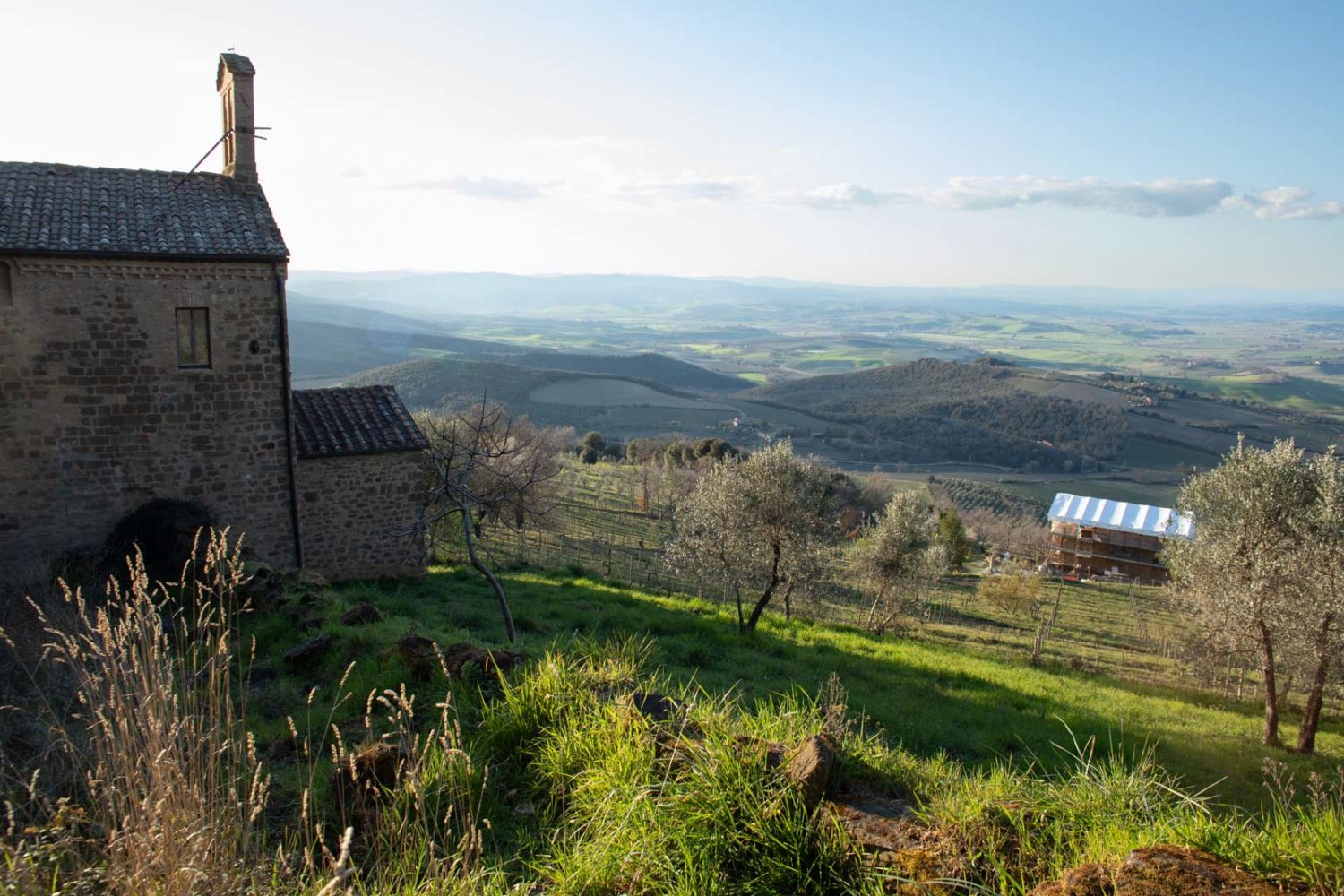
“We were part of a group of pioneers,” he recalled, listing off Gianfranco Soldera of Case Basse, Diego Molinari of Cerbaiona, and Piero Palmucci of Poggio di Sotto — winemakers who had come from elsewhere in Italy, but who quickly subscribed to a philosophy of purity through minimal intervention in the winemaking process. If Biondi-Santi had planted the flag for Brunello, then this generation of outsiders would be the ones to solidify the area’s reputation beyond one estate.
“They presented to me the road I have to follow, and for both of them the way is only the natural way. Our hands and the wine. That is the way.”
Alessandro Mori on Giulio Gambelli and Mario Cortevesio
The cadre of winemakers also had another thing in common: they learned their craft from the maestro assaggiatore Giulio Gambelli and his partner, Mario Cortevesio.
“I had two fantastic teachers,” Alessandro told me, standing amidst his massive oak barrels known throughout Italy as botti. “They presented to me the road I have to follow, and for both of them the way is only the natural way. Our hands and the wine. That is the way.”
Gambelli’s ability to parse details in Sangiovese wine is legendary within the Italian wine community, and he is largely credited with advancing Italian wine in Tuscany by leaps and bounds in the 1970s, ’80s and ’90s. But Cortevesio — who has surprisingly little written about him — was his steadfast partner and uniquely skilled in the cellar as well. In the eyes of Alessandro Mori, he was a true unsung hero.
“He and Giulio were one with the other, like brothers, more than brothers … and they died just two months apart. Carlo Macchi wrote a book on Giulio Gambelli, but nobody knows Mario Cortevesio, and for me that is a terrible thing. So Mario is just in our memory.”
Cortevesio would frequently visit Il Marroneto’s cellar — sometimes with Gambelli, sometimes on his own — and patiently counsel them on the progression of their wines.
“They’d say ‘we have to follow this wine’ or ‘it is tired’ or ‘it is precise.'” When Alessandro heard those words, he knew his wines were on their way. “Precise. That is everything in a wine.”
It was here that I began to feel more aligned with Alessandro’s way of thinking. Like many wine lovers my age, I’ve come to understand wine through analytical but problematic descriptors of sensation: fruit-salad tasting notes, medium-plus this-and-that, the quiz show drama of blind tasting. It was as though Alessandro was challenging me to establish the feeling of a wine before it had even passed my lips: a joyful proposition for a wine lover, but a holy terror for a wine communicator. Feelings are personal. A gray area. A mushy space for imprecise language. And he had just said precision is everything. I swallowed the thought and forged on.
But there was also a lingering melancholy in the air. Gambelli and Cortevesio passed away 10 years ago. Diego Molinari retired in 2015 and sold Cerbaiona to an investor group, before passing away in 2019. Gianfranco Soldera passed away the same year. And Piero Palmucci has long since sold off Poggio di Sotto (2011). Even the venerable Biondi-Santi is now owned by a French company.
“All of that has passed in the hand,” Alessandro said with a flick of his wrist.
Let Me Introduce You to the Future
If everything is about balance for Alessandro, then his melancholy about the fading past seemed joyfully balanced by the presence of his son, Iacopo, who was introduced to me as “the future.” As they showed us around the cellar, the father and son tandem worked out their communication chemistry — e.g. “why don’t you explain the vinification method, Iacopo?” — a sign of a torch being slowly but steadily passed.
The cellar is like a split-level home from the 13th century, with enormous botti seemingly placed wherever there is room. In between the two levels lies a small work space, an office, and then a lower level, where Alessandro led us down a staircase into a spectacular space lined floor-to-ceiling with back-vintage bottles. “This is what we call ‘the library of my life,” he said. “Every bottle, every vintage made by myself.”
Critical acclaim was not always a given for Il Marroneto.
There was a neatly arranged stack of 1980 Brunello di Montalcino, the family’s first vintage, as well as the 1981, ’82, ’83 and so forth. At eye-level was the Madonna delle Grazie Brunello di Montalcino from 2010, his first wine — as he pointed out — to earn a 100-point score, from Robert Parker’s Wine Advocate.
But critical acclaim was not always a given for Il Marroneto. Throughout the 1990s and early 2000s, the style of wine that captivated critics was practically the opposite of Il Marroneto: dark, brash, concentrated, forceful (ironically, often called “Parker-Point Wines”). A quick scan through the winery’s scores from various publications on wine-searcher.com reveals several average, middle-of-the-road scores throughout the period. Knowing the palates who assessed these points and their process for tasting, it is perhaps unsurprising that a wine built on subtlety and nuance was overlooked. It happened all the time during those years.
In 2008, the fever for dense, extracted Brunello broke when the Brunellopoli scandal came to the fore. Several firms were exposed for violating the DOCG laws by blending in non-Sangiovese grapes in an effort to dupe their way into fashion. It was an appalling vindication for the traditionalist camp, but a painful period for the entire appellation.
Throughout that entire era, Alessandro stuck to his guns and rode it out, eventually seeing the whims of fashion pivoting toward Il Marroneto only in the last 10 years.
One critic and wine writer who has been fond of Il Marroneto from the beginning of her career is Wine Enthusiast’s current Italian Wine Editor, Kerin O’Keefe, who told me during a recent interview that Il Marroneto’s wines embodied “elegance, vibrance and luminosity.” Recent vintages across Tuscany, but especially in Montalcino, have been extremely hot and dry, and many of the area’s wines have suffered to find their form, according to O’Keefe. My tastings, while more limited, have confirmed much the same. It is a taxing experience to encounter alcohol on the nose before anything else.
But because of his winemaking methods and, just as notably, his north-facing, meticulously cared-for vineyards, Mori has been able to produce a string of perfect scores in 2015 and 2016 for the Madonna delle Grazie Brunello di Montalcino, this time from O’Keefe. She also awarded 98 points to the same wine in 2017, a scorchingly hot vintage that reminded many of the infamously brutal 2003 vintage. (I should note that O’Keefe personally introduced me to Alessandro to make this visit possible).
However, his wines had yet to pass my palate. Brunello di Montalcino is an exclusive wine, and because of their small production and recent acclaim, demand for Il Marroneto’s wines is high; their availability, scarce.
As I asked for a portrait of the man within “the library of his life,” he pulled Iacopo in, and beamed with pride for the photo. Literally surrounded by the past, Alessandro showed no trace of melancholy. Just pride and optimism for the future. It was time to taste.
Nothing Wasted
Later on as we tried to keep up with Alessandro, my friend whispered to me “can you imagine stepping into these shoes?” Alessandro’s firmness and rigid sense of how things ought to be done was apparent, but so was Iacopo’s command of the operation. As we were handed wine glasses for barrel tasting, he explained their vinification process clearly.
After harvest, they allow fermentation to initiate naturally in large Allier oak vats, and conduct pump-overs to extract color and structure from the pomace, typically for three to four hours until the color of the wine is right. Once fermentation is complete, they press the pomace at high pressure to extract more wine. Their feeling is that this extra step increases the wine’s capacity to age because of the high acidity and tannin content coming from the wine hidden within the pomace.
“[My grandfather] didn’t consider it, but they invented something amazing. This process makes a complex wine.”
Iacopo Mori
All of their wines then rest in stainless steel to allow for the sediment to settle and be separated. The sediment, known as feccia, is mostly a sludge of dead yeast cells and dregs from the fermentation process. At Il Marroneto, the sediment-free wine is transferred to the botti barrels while the feccia that has settled is combined into separate tanks.
Why hold on to the feccia? Well, because there is still precious wine in there, and after everything has further settled, it can be removed and added to the rest of the wine.
“[The vinification technique] was something invented by my grandfather. To press the skins a lot led them to make some more wine, more money. They didn’t consider it, but they invented something amazing. This process makes a complex wine.”
From there, things get very interesting. When we had first entered the cellar, Alessandro noted that this was where he “seasons” the wine, a term I was more accustom to hearing from a chef. But it steadily came to light what Alessandro meant. Because every barrel imparts its own hallmark, he introduces the Brunello wines to different barrels with a rotation roughly every four months over their 39 to 41 months of aging. This requires an incredible level of care to ensure nothing goes wrong and that excessive oxygen exposure is avoided (not to mention a massive amount of barrel cleaning to avoid spoilage, and coordination on where each wine ought to go).
“Here, things are different,” he had said when we first arrived, and now we were really beginning to see how.
The Giro di Botti
As the first barrel sample was pulled from the 2020 Brunello di Montalcino, Alessandro told us his plan. We were going to see the evolution of the wine over three vintages, all of them marching steadily towards their fate in the bottle. We would taste from several different barrels and were instructed not to swish-n-linger with the wine, because our saliva over time would, in his opinion, render it flat. Just a small, quick taste and an impression of the wine’s spirit.
“We call it the ‘Giro di Botti,'” he told us, a play on the iconic cycling race that traverses Italy every May. Clearly, this was a final exam he’d proctored before.
While order and tidiness — and especially cleanliness — were hallmarks of Il Marroneto’s cellar, I could not figure out how they kept track of the wines’ locations. As our Giro di Botti began, we moved from one spot to the next, double-backing to different rooms to taste from different barrels. The slate hung from each botti had different wine names from the front to back, and Alessandro and Iacopo frequently referred to the back of them as much as the front. But it all made perfect sense to them, and soon, the precision that Alessandro espoused earlier made perfect sense to me and Adam as well.
“We have not discovered how to make wine in the last 25 years. It is the terrible mistake of today.”
Alessandro Mori
At the first wine, we noted the color, a luminous tone of red that shined like a ruby. Despite the pump-overs, the pressing of the feccia, the desire to get everything magical out of the grape, this was not an “extracted” Brunello. Sniff, sip, finish: beauty.
“Tenzione,” Alessandro commented. Tension. He also likened the total textural state of the wine to wool, an interesting association that I had often ascribed only to tannins, but indeed, the sensation on the palate was just that: as unsettled as the fluffy stuff on a lamb.
For Alessandro, acidity is the singular element to quality Brunello di Montalcino. When it is dialed in right, it reduces the need for sulfur dioxide and establishes a wire from which all the other elements of the wine can attach.
“The acidity stays the same,” he said. “Never forget that we’ve discovered nothing here. Three thousand years ago, the Etruscans made wine here. Two thousand years ago, the Romans made wine here. One thousand years ago, the Medieval [people] made wine. Leonardo di Vinci drank Sangiovese. So no, we have not discovered how to make wine in the last 25 years. It is the terrible mistake of today … Sixty years ago, there wasn’t [added] sulfites. They used the natural acidity to allow the wine to age. Acidity is the secret of the wine for thousands of years.”
If it sounds like Alessandro is a devout naturalist, think again. He quickly pivoted to how industrial wines lack emotion, and as a result, people now turn to “natural wines” mistaking the flaws for emotion. “In the last 10 years, with the natural wines, they have excused a lot of terrible wines.”
Next botti. The 2019. “Cotton shirt,” Alessandro said, referencing the texture of the wine. He pivoted, his blue-plaid overcoat fanning out like a cape. To the next botti: the 2018. “Silky,” he said. I spent too long thinking about this third taste and was warned: “Just a little taste. We have to taste all the barrels!”
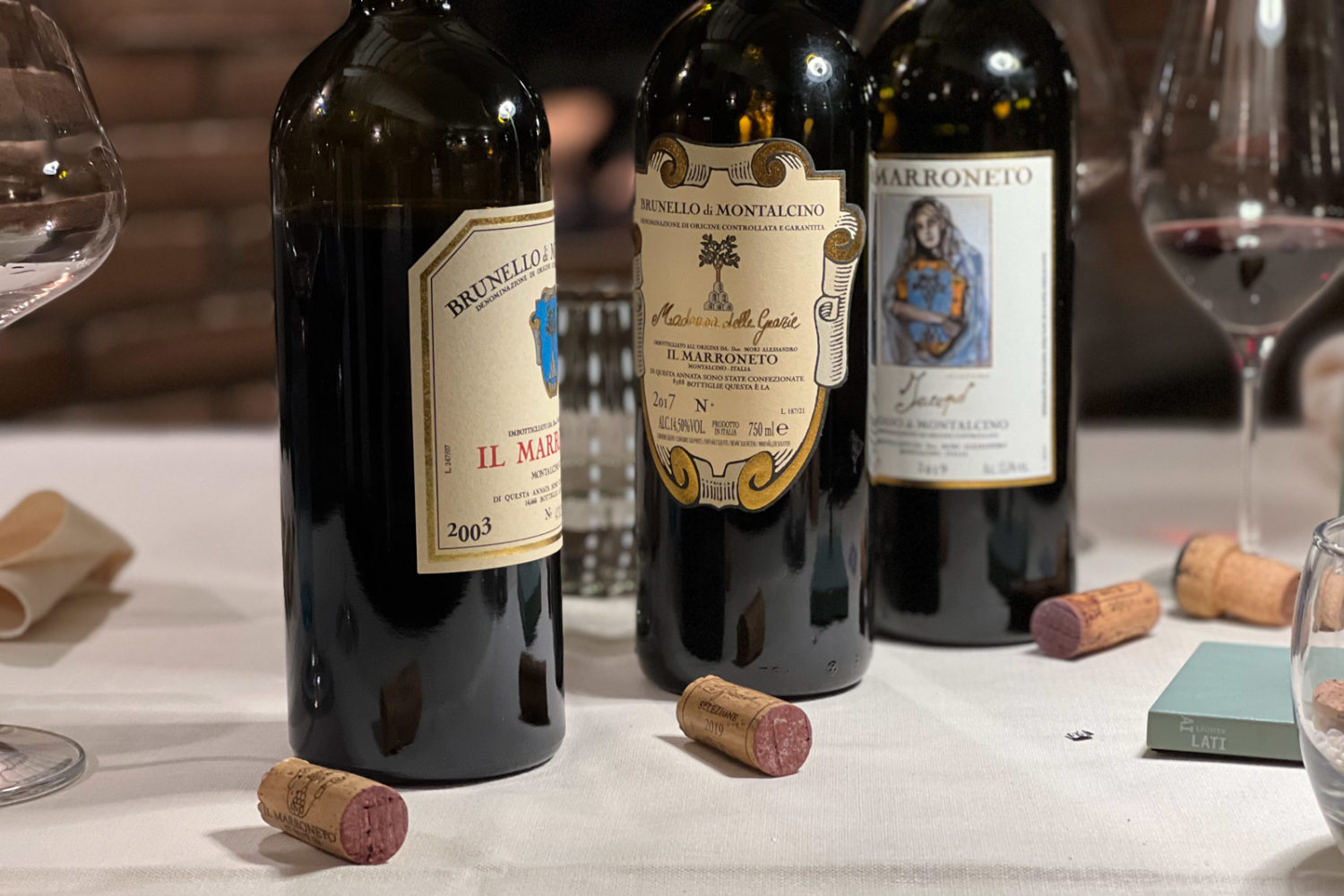
We then did the same circuit — 2020, 2019, 2018 — but with the Madonna delle Grazie, which resided inside some of the original botti barrels from the winery’s inception in the 1970s. Words remained elusive for me, the tightness and still not-fully-formed wine appearing beautiful and inviting, if a bit mysterious to my untrained-as-a-cellarmaster perspective. The 2019, though, shot across the palate like lightning. The 2018, as close to fully formed as we would get in the cellar, was more settled and shapely. There were differences, and they were startling and thrilling.
The Three P’s of Winemaking
I asked Alessandro how the wines were tasting to him on this day. Were they different from last week? The week before? What were they saying?
He noted that this was the most important “passage” of the year for the wine: springtime. It was when the wine woke up from a wintertime slumber and began to reveal new things and head in new directions. But before long, he returned to a mantra he had been pounding all afternoon: cleanliness. Every time a wine moved, it had to go into a perfectly clean barrel.
“There are three P’s: passione, pulizia , and pazienza ,” he said.
Outside, the sky opened up again and rain poured down. We had walked down the steep lane to Il Marroneto from town and were due at Padelletti — another Montalcino traditionalist — at the top of the hour. Without hesitation, Alessandro offered to drive us.
As we drove through the Madonna delle Grazie vineyard and climbed up to town, I wondered about what we had accomplished, if anything, on the Giro di Botti. The tour revealed the wisdom of a time-honored craft, but perhaps the bigger takeaway was simply Iacopo’s presence.
I had asked him how he felt about stepping into the captain’s role at Il Marroneto. But really, it was a question about living up to his father’s high standards. “No pressure, right?” I asked.
He smiled easily. “A little bit.”
After a laugh, he added: “It is something I love to do, and it comes almost easily for me. I’ve learned what he has had to teach me, and then, I will do it by myself.”
Simple as that.
A Fully Formed Taste
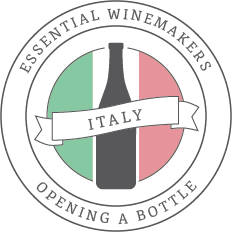 Later that evening, we tasted the bottled 2019 “Selezione Iacopo” Rosso di Montalcino as well as the 2017 “Madonna delle Grazie” Brunello di Montalcino.
Later that evening, we tasted the bottled 2019 “Selezione Iacopo” Rosso di Montalcino as well as the 2017 “Madonna delle Grazie” Brunello di Montalcino.
For notes on these wines, paying subscribers can visit Il Marroneto’s Essential Winemakers of Italy page.












